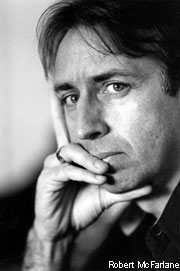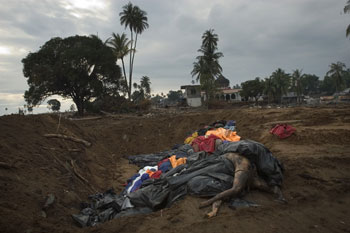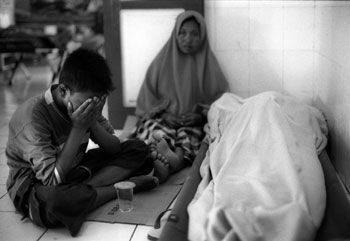 |
 | |||||||
How Much More?
February 2005
|
 |
||||||
|
When I got news of the Tsunami striking Aceh, my thoughts were, "how much more can these people take?" They had been living through a long-running war between the Indonesian Military and GAM (Free Aceh Movement), and now this. I had worked in Aceh before, covering the conflict and knew Banda Aceh well. I have vivid memories of its cafes, restaurants, markets and people. Before heading back there, I had seen the satellite images showing the scale of the destruction caused by the killer wave. I had read that the Earth was still ringing like a bell. What I saw on the ground in Aceh altered me. Bodies lay in waterways, on rooftops, twisted inside cars, and buried beneath rubble. You might not have been able to see them all but you were constantly reminded they were there. That smell of death stays with you. It saturates your clothes, boots, even your equipment. The mask you are wearing to protect you from the smell eventually reeks of it.
At Kesdam Hospital there are noticeboards where survivors put up images of the missing. Two women visit the children's ward. One of the women suddenly breaks down and cries uncontrollably. The other tries to console her, tears in her eyes. The crying woman tries to tell me something. I don't fully understand. She holds up four fingers. It is overwhelming. It is impossible to fully comprehend what these people are going through, to survive something as catastrophic as this and attempt to rebuild, and to go on living despite what they have lost. This place breaks your heart.
© David Dare Parker
Dispatches are brought to you by Canon. Send Canon a message of thanks. |
|||||||
Back to February 2005 Dispatches
|
|


